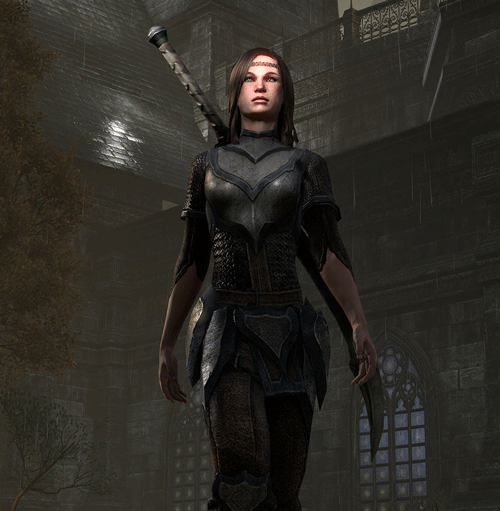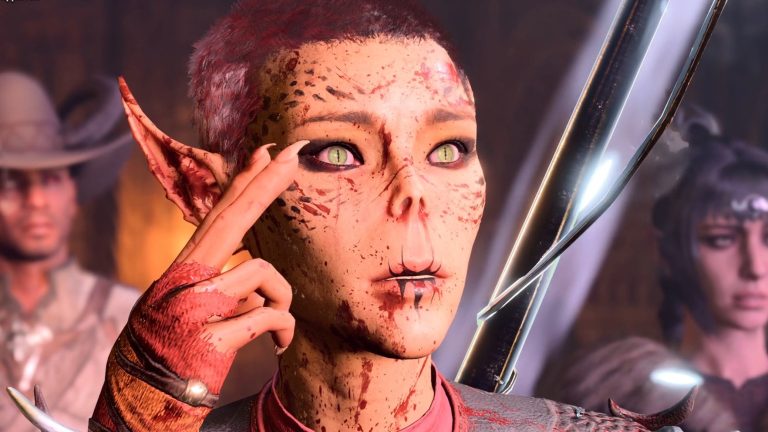This preview of Mount & Blade: With Fire & Sword is based on a demo provided by the game’s publisher, Paradox. The demo caps off at level 7, does not provide multiplayer, and provides only limited skirmish scenarios. Such limitations will not be present in the full game, which has no level cap and promises a rich variety of multiplayer scenarios.
Mount & Blade: With Fire & Sword is an upcoming standalone expansion pack to the excellent sandbox action-RPG Mount & Blade. Like its predecessor, With Fire & Sword offers a completely open world, where you recruit and manage a large band of fighters and accept quests from lords and mayors, with longtime goals of joining a faction or even becoming a king yourself. The franchise’s main draw throughout all its titles is its excellent combat system, which is flexible and intuitive, with each battle feeling unique as you employ different tactics or the tides of fortune just happen to sweep another way.
What makes With Fire & Sword different from its predecessor is that it is set in 1655, in a semi-fictional representation of Eastern Europe at the time, with factions such as Tsarist Muscovy battling Poland-Lithuania. It’s a novel setup compared to Mount & Blade, which was set in a fictional land, albeit one that clearly resembled medieval Europe and its environs. The jump forward in time means a different albeit not wildly different visual style, as well as the addition of firearms. The game is based on a Polish historical novel penned in the late 19th century, called Ogniem i Mieczem, which is translated as With Fire and Sword. The work is generally considered a standard in Polish schools, but while I know of its existence it never passed in my curriculum as a student of history, and I am unfamiliar with the story and can not say how it relates to the game, other than being set in the same year and region.
The real life setting is utilized to create more unique and detailed models. Of particular note here is Moscow, which is adorned with St Basil’s Cathedral and Kremlin. These areas will provide nice backgrounds to multiplayer battles, and in general cities in With Fire & Sword seem more visually unique and appealing than the cities of Mount & Blade were.
The addition of firearms (and grenades, which I did not get to try out as they are prohibitively expensive) is one of the biggest changes to the way the game plays. They are fairly primitive pistols and muskets, and as such not as unbalancing as some might fear, but they do significantly shift the gameplay balance. I can not comment too much on higher level gameplay as that was capped off, but at lower levels any firearm is essentially a one-shot kill weapon. They are hard to aim with and take forever to reload, but in the Mount & Blade franchise they’re the first serious challenger to horse dominance.
Mount & Blade’s updates and the Warband expansion already did quite a bit of work in this direction, trying to rebalance towards infantry and archers primarily by nerfing cavalry charges. It worked to some extent, but it appears firearms will do so to a much greater extent. Set up a line of rifle-armed marksmen on the battlefield, wait for the enemy to charge and watch them be scythed down in a hail of bullets. I can not call it unbalanced as the cavalry that survive will still wreak havoc when they reach the line though I am curious to see how it works in siege scenarios which I was not able to fully test out but it is a game changer, which is only a good thing in my opinion, adding more variety and flavor to battles that could before be resolved simply by heavy cavalry charges.
One disadvantage of the large amount of damage rifles and pistols cause is that – at least early on – this adds a large factor of luck to battles. Even bandits have some firearms, and if one of them is lucky enough to score a hit with his low skill and shoddy weapon, he’ll still likely down you with that single shot, possibly turning the tide of the battle. For a game that you’re encouraged to play without regular saving, that can get pretty frustrating.
But while battles have changed, the game seems to recycle quite a lot otherwise. The basic setup of factions, towns and villages is unchanged from Mount & Blade. More quests have been added to increase variety, but the system is still the same, with functionally identical majors, lords and village elders picking a random quest from a set list, including rescuing a hostage by paying the ransom, delivering an expensive horse to the king, driving a cattle herd to another city, and so on and so forth. The new quests do seem to be of an interesting type, as I took on a “more risky” quest – lords offer both safe and risky quests, the latter defined by more liking from them and their faction but loss of reputation with an opposing faction. It saw me delivering materials to a lord to aid him in battle, only to find him unsatisfied with the delivery. The lord then coerced me into ambushing an enemy caravan to deliver him actual weapons he could use rather than just materials for weapons.
The game also features a short tutorial, which consists of a quick explanation of melee, gun and horseback combat as well as getting to try all three out on weak opponents, followed by an explanation of the game’s world, factions and your place in it as a skilled mercenary leader. This tutorial is an improvement over just throwing you into the game’s world as Mount & Blade did, but it feels a bit mechanical and forced, and could use some more work.
With Fire & Sword utilizes the same engine as Mount & Blade, and does not look much more impressive graphically than its predecessor. Playing on version 1.137, one oddity I encountered was that the game has really long loading times, even for such simple tasks as popping into a dialog screen. Considering its predecessor did not suffer from this, I can only assume it will be polished away before release, and it was the only technical flaw I encountered in my playthrough.
Other than new clothes and buildings, the game further adopts a new atmosphere by expanding the game’s soundtrack with music appropriate to the 17th century. I mostly found these new tunes to be on the intrusive and grating side compared to the more atmospheric soundtrack of Mount & Blade, much to the game’s detriment. The sparse voicing includes taunts to open dialog and some in combat remarks, some seemingly voiced in the native language, though I could not understand much of the English voice work in M&B and can not understand much of the voicework here.
Noting that my experience with the game was limited due to multiplayer being inaccessible and the level capping off – locking me off of the additions to siege works and multiplayer – my main concern about With Fire & Sword lies in the question of how much it actually adds to the experience. Mount & Blade has an active and creative modding community, who have long since added firearms to the game and have provided an assortment of alternate total conversions and multiplayer gameplay mode mods for Mount & Blade and Mount & Blade: Warband. Warband had the advantage of adding multiplayer, but With Fire & Sword doesn’t shoot for any such game-changing alterations. It will no doubt be worth it for hardcore fans – such as your humble author. For others, just adding guns and grenades is a bit underwhelming considering the potential of the setting’s era. This is a bit constrained because of the region, but when I think of transporting Mount & Blade into the 17th century, I think of opening up political machinations on the story side and massive ship battles on the battle side. Considering the potential, I can’t help but feel that With Fire & Sword just might underwhelm.






